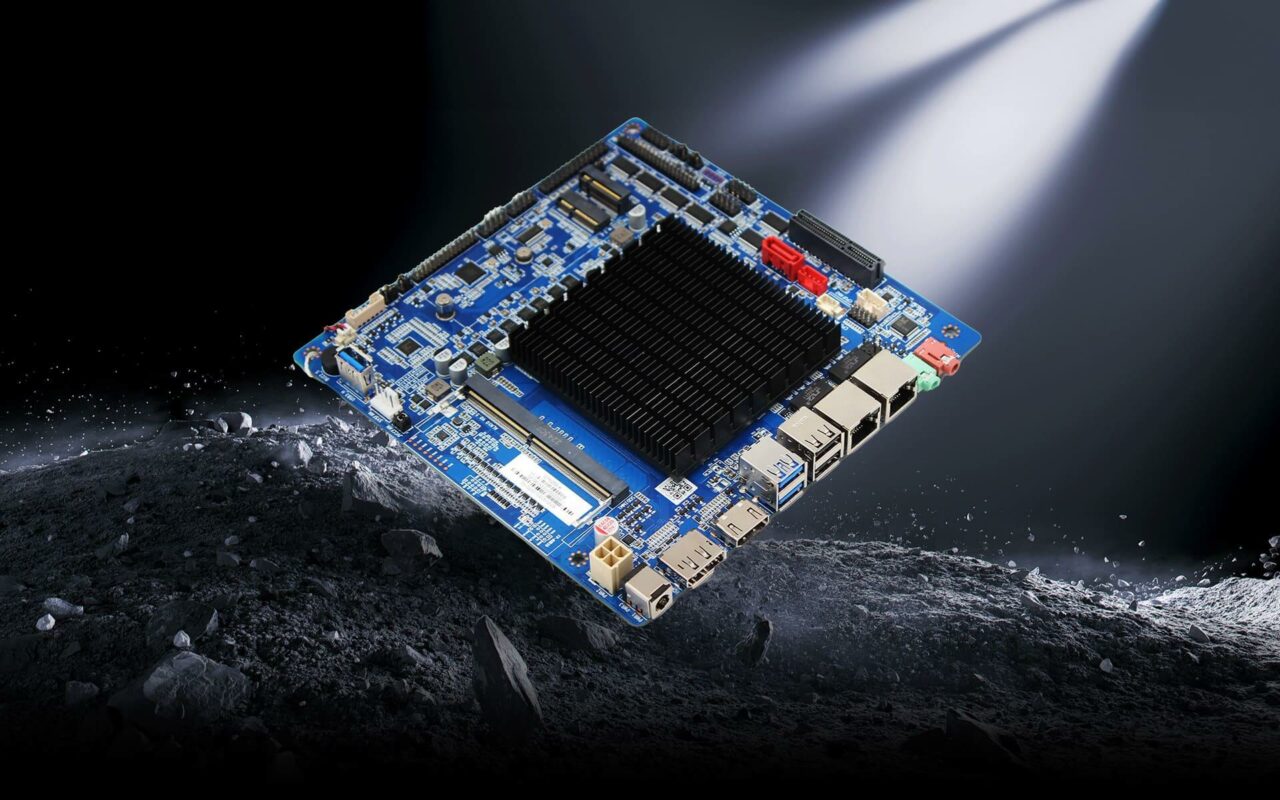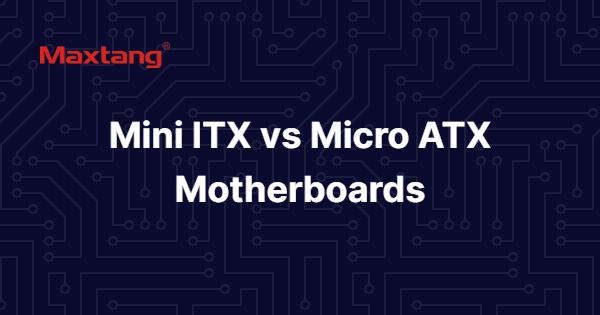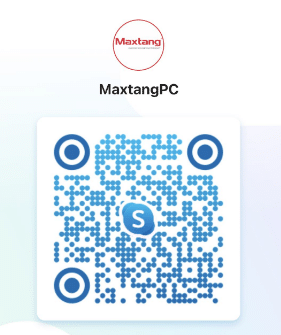When considering the assembly of a personal computer, the selection of an appropriate motherboard is of paramount importance. The Mini ITX and Micro ATX motherboards emerge as prevalent options, each presenting distinct advantages and features.
This discourse endeavors to scrutinize the two motherboard options, Mini ITX and Micro ATX, through a comparative analysis encompassing elements such as size, expansion slots, performance, and additional attributes.
Whether one’s pursuits center around attaining optimal performance as a gamer or crafting a condensed build as a DIY enthusiast, this examination seeks to assist in determining the most suitable motherboard selection.
1. Size and Form Factor
When evaluating Mini ITX and Micro ATX motherboards, one critical factor to consider is their size and form factor, as it directly influences the overall dimensions of the build and the available space for components.
Mini ITX motherboards are renowned for their compactness, being the smallest among consumer-grade boards with dimensions of only 6.7 x 6.7 inches. This reduced size allows for extremely small builds, making them ideal for environments with space constraints or portable setups.
In contrast, Micro ATX boards are slightly larger, measuring 9.6 x 9.6 inches, providing a bit more room for expansion while still maintaining a relatively compact form factor. These variations in dimensions play a vital role in determining the overall size of the PC configuration and are crucial considerations for individuals emphasizing space-efficient designs.
2. Expansion Slots and Ports
One of the key factors to consider when comparing Mini ITX and Micro ATX motherboards is the presence of expansion slots and ports, which dictate the available connectivity options and the potential for integrating additional components.
Mini ITX motherboards are typically equipped with a limited number of expansion slots and ports due to their compact form factor. These boards usually provide a single PCIe slot and a modest number of USB ports, which may meet the requirements for basic operations.
Conversely, Micro ATX motherboards offer a greater number of expansion slots and a wider selection of ports including USB, HDMI, DisplayPort, and multiple PCIe slots. This expanded array of connectivity options enhances functionality and facilitates the integration of multiple peripherals or high-performance components, making Micro ATX motherboards a preferable choice for users with more demanding requirements.
3. Power Consumption
Understanding the power consumption requirements of Mini ITX and Micro ATX motherboards is essential as it directly influences the necessary cooling solutions, overall performance, and compatibility with various processors and GPUs.
In comparing these two motherboard types, Mini ITX boards typically exhibit lower power consumption owing to their smaller size and fewer components. Consequently, they may demand more effective cooling mechanisms to regulate the heat generated by high-performance processors.
Conversely, Micro ATX motherboards, being marginally larger, often feature more robust power delivery systems, resulting in higher power consumption. The critical task is to strike a harmonious balance between power efficiency and performance to ensure optimal system stability and longevity.
4. Cost
The cost factor plays a crucial role in the decision-making process when choosing between Mini ITX and Micro ATX motherboards. It not only encompasses the initial investment but also the long-term maintenance and upgrade expenses, which are influenced by the manufacturers and market trends.
Within budget constraints, it is essential to evaluate the reputation of different manufacturers based on criteria such as reliability, build quality, and customer support. Although Mini ITX motherboards may have a higher initial cost due to their compact design and specialized features, they may offer superior long-term value with fewer constraints on upgrades. Conversely, Micro ATX boards are often more economically viable upfront, making them an appealing choice for those mindful of costs.
Market trends and future-proofing are additional considerations in determining the cost-effectiveness of each option. Investing in the latest technology can ensure compatibility with forthcoming advancements and lead to cost savings over time.
5. Compatibility with Other Components
When selecting between Mini ITX and Micro ATX motherboards, it is crucial to ensure compatibility with other components such as RAM, storage devices, processors, and graphics cards. This compatibility directly influences the performance and functionality of the overall build.
Incompatibility issues can result in system instability or complete failure. The form factor of the motherboard is a critical factor in determining the components that can be utilized. Mini ITX boards are renowned for their compact size but offer limited expansion slots and ports compared to Micro ATX boards, which provide greater versatility. It is imperative to consider the form factor not only in relation to space constraints but also concerning potential future upgrades or modifications.
By guaranteeing component compatibility, smooth operation is ensured, maximizing the system’s potential.
6. Cooling and Airflow
Effective cooling and airflow management are crucial considerations when working with Mini ITX and Micro ATX motherboards, particularly in relation to the available cooling options and the potential for overclocking to optimize performance.
Maintaining optimal temperatures and preventing heat-related issues that could impede component performance necessitates a well-designed cooling system. The strategic design of airflow is instrumental in ensuring efficient heat dissipation, enabling components to operate at peak levels. Insufficient cooling solutions may result in thermal throttling, reducing performance and posing a risk of hardware damage. By implementing efficient cooling mechanisms, system stability is improved, while also creating opportunities for overclocking. This allows users to maximize the performance of their hardware, pushing it to its limits for enhanced functionality.
7. Performance and Overclocking Potential
The evaluation of the performance and overclocking capabilities of Mini ITX and Micro ATX motherboards necessitates a thorough analysis of benchmark results and an assessment of the performance-to-size ratio to comprehend the capabilities inherent in each form factor. Performance benchmarks serve as essential metrics in determining the efficacy of these compact motherboards in handling demanding tasks.
Through the evaluation of processing power, memory speed, and graphics performance against established industry benchmarks, users can arrive at well-informed decisions based on empirical data.
Furthermore, overclocking serves to augment the computational prowess of Mini ITX and Micro ATX boards, affording enthusiasts the opportunity to push their systems beyond stock configurations. The overclocking potential of these diminutive form factors significantly contributes to their performance-to-size ratio, give the power toing users to achieve heightened clock speeds and optimize overall efficiency within a constrained physical footprint.
8. Upgradeability
It is crucial to analyze the upgradeability features of Mini ITX and Micro ATX motherboards in order to assess the potential for future enhancements, by examining the expansion options and upgrade paths that each form factor presents.
Both Mini ITX and Micro ATX motherboards offer distinct upgrade paths based on their respective form factors. Mini ITX boards, being the smallest, have limited expansion slots for incorporating new components. They are characterized by their compact size, making them suitable for smaller builds.
Conversely, Micro ATX motherboards provide a greater number of expansion options with additional PCIe slots and RAM slots, offering more flexibility for future upgrades. When deciding between Mini ITX and Micro ATX for system upgrades, it is imperative to take into account factors such as space constraints and the desired level of expandability.
9. Customization and Aesthetics
The customization options and aesthetics associated with Mini ITX and Micro ATX motherboards are essential factors in the process of personalizing a computer build. These options allow users to create a unique visual presentation and highlight their brand preferences.
When selecting a motherboard, the visual appeal of the components within a PC is often considered equally significant to their functionality. Many individuals prioritize sleek and stylish designs that complement the overall theme of their build. Whether opting for a minimalist black and white color scheme or a vibrant, RGB-lit configuration, the aesthetics of a motherboard can have a significant impact on the overall appearance.
Furthermore, brand reputation plays a pivotal role in decision-making, with users frequently favoring well-established industry names for their reputation of reliability and performance. Personal preferences are crucial in the selection of a motherboard based on aesthetics, enabling users to express their individual style through their PC builds.
10. Personal Preference
The selection between Mini ITX and Micro ATX motherboards is a decision influenced by personal preferences, current market trends, user experience, and desired functionality. It is essential to ensure that the chosen motherboard is in line with individual needs and expectations.
Personal preferences should be carefully considered, taking into account factors such as aesthetics, connectivity options, overclocking capabilities, and potential for future upgrades. Remaining informed about market trends can provide valuable insights into emerging technologies, advancements in chipsets, and variations in pricing.
User experience holds significant importance, as a well-designed motherboard with intuitive BIOS settings and strong performance can improve overall system stability and usability. Functionality is another key consideration, with features like support for multiple GPUs, high-speed storage interfaces, and networking capabilities needing to align with the specific usage requirements of the user for optimal satisfaction.

ALN10 Intel® Alder Lake Embedded Motherboard
What Are Mini ITX and Micro ATX Motherboards?
Mini ITX and Micro ATX motherboards are widely preferred options within the PC building community due to their compact size and distinctive features that cater to diverse user requirements.
Mini ITX motherboards, the smaller of the two, are particularly popular among users seeking to construct small and portable systems without compromising on performance. These motherboards typically feature one expansion slot and fewer connectors, yet they excel in power efficiency.
Conversely, Micro ATX boards offer more expansion capabilities with multiple slots for additional components such as graphics cards and RAM. This versatility makes them suitable for both gaming and workstation configurations.
Despite their contrasting sizes, both types of motherboards are valued for their flexibility and ability to fit into a variety of PC cases. This provides users with the flexibility to build systems tailored to their specific needs.
What Are the Key Differences Between Mini ITX and Micro ATX Motherboards?
The comprehension of the fundamental distinctions between Mini ITX and Micro ATX motherboards necessitates an evaluation of the advantages and disadvantages inherent in each form factor, encompassing aspects such as component compatibility, GPU support, processor options, and overall performance.
Mini ITX motherboards, characterized by their diminutive size, prove optimal for compact PC assemblies and systems with constrained space availability. These boards offer superior portability and are often favored for LAN gatherings or compact gaming configurations. However, owing to their compact dimensions, Mini ITX motherboards may feature a limited number of expansion slots and restrained cooling mechanisms, potentially affecting the system’s overall performance.
Conversely, Micro ATX motherboards strike a favorable equilibrium between size and functionality. Typically, they present a greater number of expansion slots, facilitating increased customization and upgrade possibilities. Additionally, Micro ATX boards generally exhibit a more cost-effective pricing structure in comparison to their Mini ITX counterparts, rendering them a prevalent choice among budget-conscious builders. Concerning GPU compatibility, Mini ITX motherboards may face constraints in accommodating larger graphics cards due to spatial limitations, while Micro ATX boards typically offer ample room for larger GPUs.
Similarly, processor compatibility may demonstrate variability across the two form factors, as certain Mini ITX motherboards support high-end CPUs but may necessitate supplementary cooling solutions for effective heat dissipation management. In contrast, Micro ATX motherboards typically deliver superior support for a broader spectrum of processors without compromising extensively on cooling solutions. The selection between Mini ITX and Micro ATX motherboards fundamentally hinges upon the user’s specific requisites, taking into account factors such as available space, budget allocation, performance prerequisites, and desired functionalities.
Which Motherboard Is Better for Gaming?
The process of determining the superior motherboard option for gaming, whether Mini ITX or Micro ATX, necessitates a thorough analysis of performance metrics, graphics card compatibility, and overall suitability for constructing a gaming system.
Mini ITX motherboards are renowned for their compact dimensions and are commonly favored for smaller gaming configurations where space is a limiting factor. Despite their reduced size, these motherboards do not compromise on performance, accommodating high-end hardware components such as powerful graphics cards.
Conversely, Micro ATX motherboards offer a greater degree of flexibility concerning expansion slots and connectivity options, enabling potential upgrades in the future.
When identifying the optimal gaming motherboard, it is imperative to take into account considerations such as VRM cooling, memory support, overclocking capabilities, and the quantity of USB and SATA ports to ensure a seamless gaming experience.
Which Motherboard Is More Suitable for Compact Builds?
When considering compact builds and space-saving designs, individuals must carefully evaluate the processor support, dimensions, and layout compatibility of Mini ITX and Micro ATX motherboards to select the most appropriate option for their specific build.
Mini ITX motherboards are renowned for their remarkably compact size, making them an ideal choice for individuals seeking to construct a small form factor PC without sacrificing performance. These motherboards typically offer support for the latest processors and boast exceptional power efficiency, rendering them a favored selection for gaming setups and Home Theater PCs.
Conversely, Micro ATX boards present users with slightly more expansion options, including additional PCIe slots and RAM capacity, catering to those who necessitate a slightly larger yet still compact system. Both form factors play a pivotal role in influencing the ultimate dimensions and spatial efficiency of the completed build.
What Are the Best Use Cases for Mini ITX and Micro ATX Motherboards?
Mini ITX and Micro ATX motherboards are designed to accommodate a range of use cases, spanning from workstation configurations that demand reliability and high performance to home theater PCs that prioritize media consumption and entertainment experiences.
The compact dimensions and efficient layouts of Mini ITX boards make them well-suited for smaller form factor PCs, particularly advantageous for setups with space constraints or requiring portability. Conversely, Micro ATX boards strike a balance between size and expansion slots, rendering them versatile options for mid-sized builds.
Workstations benefit from the stability and robust power delivery provided by Mini ITX boards, ensuring seamless multitasking and the smooth operation of resource-intensive applications. On the other hand, home theater PCs excel in multimedia functionalities and integrated audio features, attributes that are commonly found in Micro ATX boards.
What Factors Should You Consider When Choosing Between Mini ITX and Micro ATX?
When confronted with the decision of choosing between Mini ITX and Micro ATX motherboards, it is essential to take into account personal preferences, component compatibility, cooling needs, and upgrade options to arrive at an informed decision.
Mini ITX motherboards, being the smaller of the two options, are well-suited for compact builds and setups with limited space. Conversely, Micro ATX boards provide more room for expansion slots and offer the potential for additional features due to their larger size.
Users should evaluate their build requirements, such as the necessary number of PCIe slots for graphics cards or other peripherals, and establish whether they prioritize a smaller form factor or future expandability. Examining the compatibility of components like CPU coolers, RAM modules, and storage devices with the selected motherboard is vital for a smooth and effective build process.
Frequently Asked Questions
What is the difference between Mini ITX and Micro ATX motherboards?
Mini ITX and Micro ATX are two different sizes of motherboards. Mini ITX is the smallest of the two, measuring at 17×17 cm, while Micro ATX is a bit larger at 24.4×24.4 cm.
Which one is suitable for a compact or small form factor PC?
Mini ITX motherboards are designed specifically for compact or small form factor PCs due to their smaller size. However, Micro ATX can also fit in smaller cases, but may not leave much room for other components.
What are the advantages of a Mini ITX motherboard?
Mini ITX motherboards are great for small form factor builds as they take up less space and can be easily transported. They also tend to be less expensive than their Micro ATX counterparts.
Are there any drawbacks to using a Mini ITX motherboard?
Due to their smaller size, Mini ITX motherboards have less room for expansion slots and may have fewer features compared to Micro ATX motherboards. They also tend to have a higher price point for the same features.
What are the advantages of a Micro ATX motherboard?
Micro ATX motherboards offer more expansion slots and features compared to Mini ITX motherboards. They are also more budget-friendly and can be used in both compact and larger PC builds.
Which one is right for me?
It ultimately depends on your specific needs and preferences. If you are looking for a compact build with fewer features but easier portability, then Mini ITX may be the right choice for you. However, if you want more expansion options and a more budget-friendly option, then Micro ATX may be the better fit.




